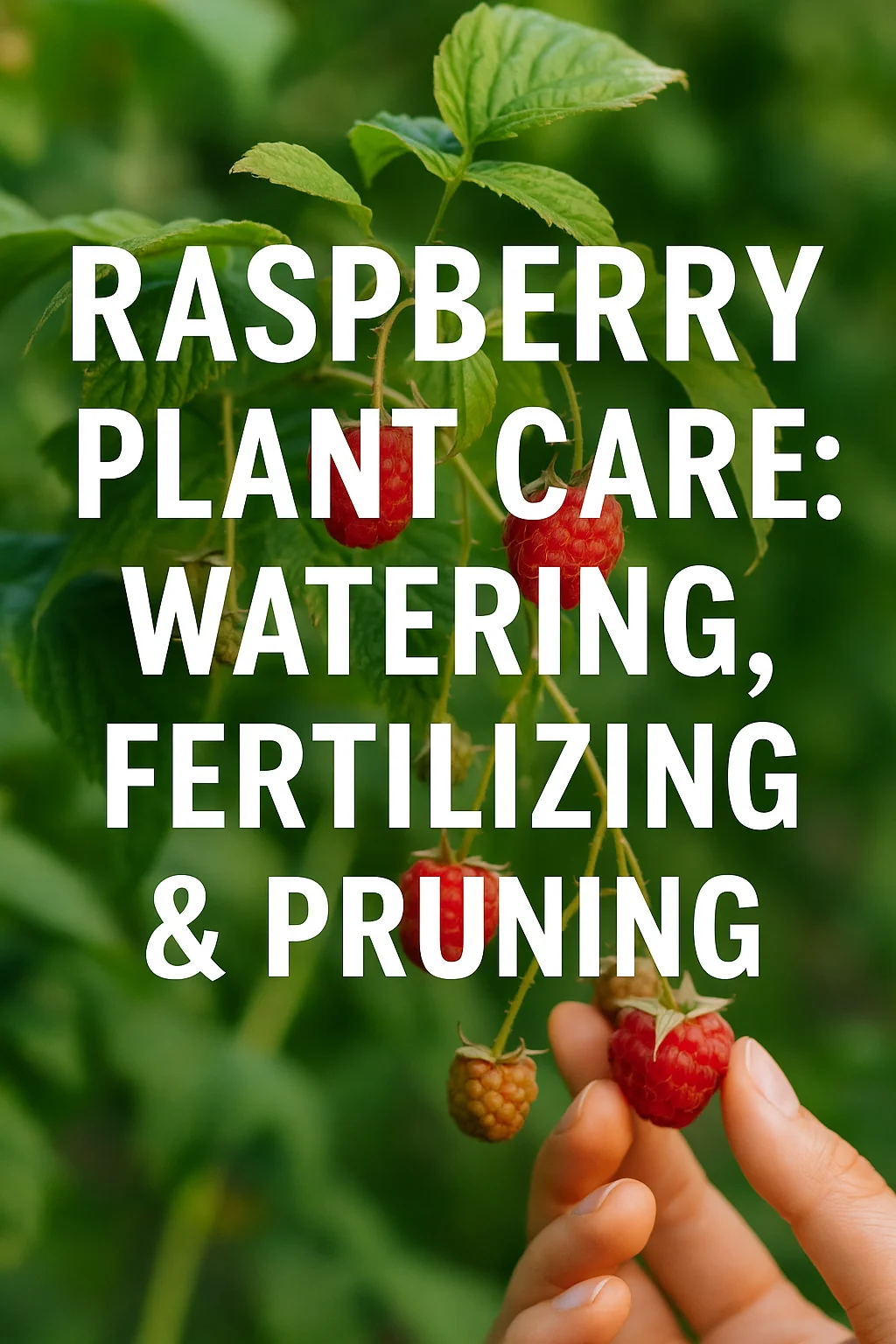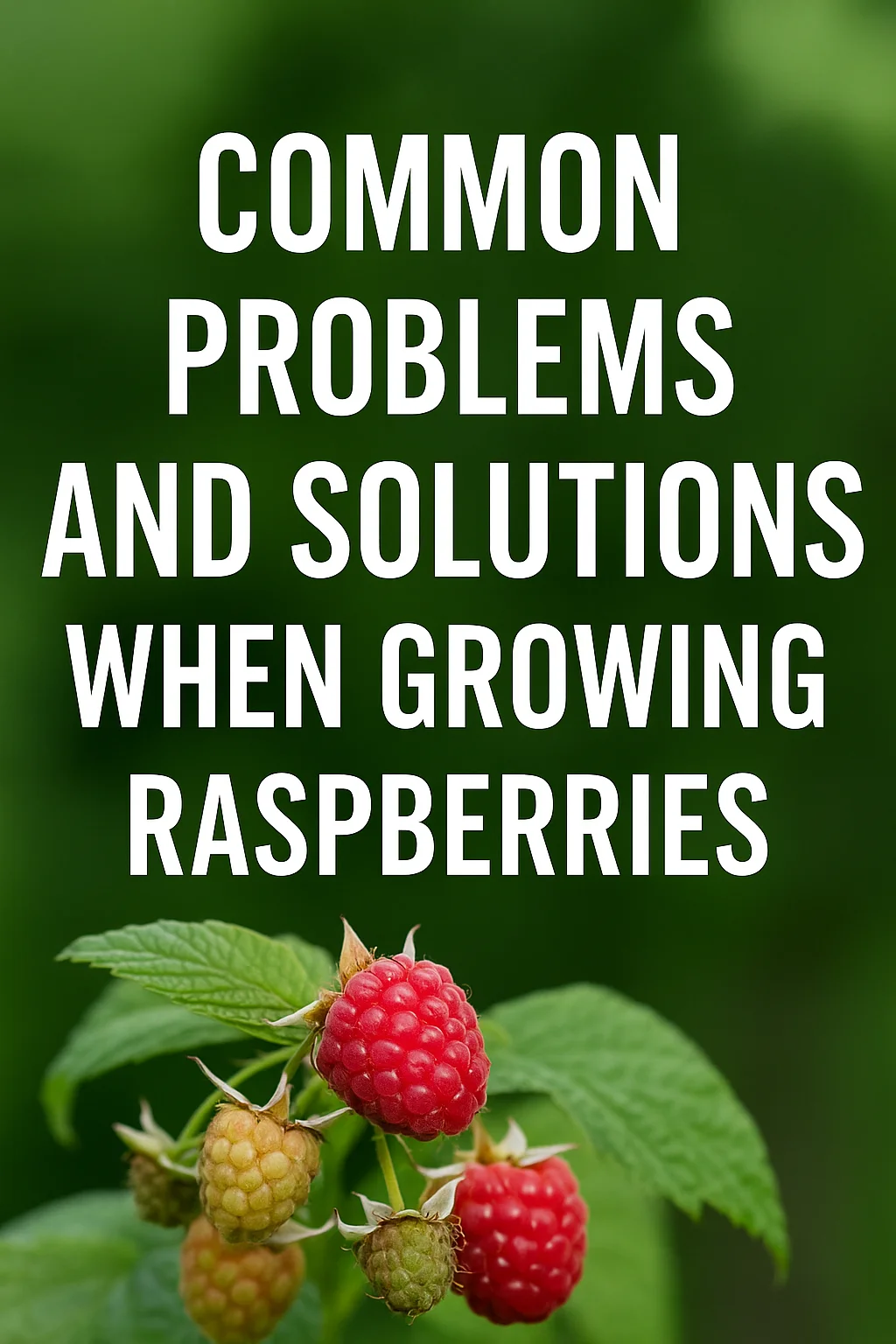Why Growing Raspberries Is So Rewarding
Imagine walking through your garden on a warm morning and plucking a sun-kissed raspberry, sweet and juicy, straight from the vine. Growing your own raspberries is more than just gardening—it’s an experience rooted in satisfaction, sustainability, and flavor. If you’ve ever wondered how to grow raspberries, you’re about to discover that growing raspberries is simpler than you think—and incredibly rewarding.

Whether you want fresh berries for smoothies, homemade jam, or just a snack while you garden, learning to grow raspberries gives you a continuous source of one of nature’s most delicious fruits. With the right knowledge and growing techniques, you’ll enjoy years of harvests from just a few raspberry plants.
Understanding Raspberry Basics Before You Plant

Before you dig your first hole, you need to know what kind of raspberries are right for your space and goals. Learning how to grow raspberries starts with understanding the different types.
Know Your Raspberry Types
- Summer-bearing raspberries: Produce one large harvest in early to midsummer. Best for those who want a big crop all at once.
- Everbearing (fall-bearing) raspberries: Yield berries twice a year—lightly in summer and heavily in fall. Ideal for extended harvest seasons.
Best Raspberry Varieties to Grow
Depending on your region and garden setup, choose from:
- Red raspberries: Heritage, Latham (most common and hardy)
- Black raspberries: Jewel, Mac Black (richer flavor, more delicate)
- Purple raspberries: Royalty (a hybrid of red and black)
- Yellow raspberries: Fallgold (sweet, low-acid flavor)
How to Grow Raspberries from Scratch

Choose the Right Location to Grow Raspberries
Raspberries love sunshine and good air circulation. For the healthiest plants and best fruit:
- Choose a spot with 6–8 hours of full sun daily.
- Use slightly acidic soil with a pH of 5.5 to 6.5.
- Avoid low spots where frost collects or water sits.
Preparing the Soil for Growing Raspberries
Soil preparation is crucial when you’re learning how to grow raspberries. They thrive in fertile, well-draining ground.
- Add compost or aged manure to boost fertility.
- Loosen soil to at least 12 inches deep.
- Use a raised bed if drainage is poor.
Planting Raspberry Canes
Timing and spacing matter. Follow these steps:
- Plant in early spring or late fall, while dormant.
- Dig holes deep enough to cover the roots.
- Space raspberry canes 18–24 inches apart.
- Keep 6–8 feet between rows for airflow and harvesting access.
👉 Want to get even more out of your backyard? Explore The Self-Sufficient Backyard and learn how to grow your own food, harvest rainwater, and live sustainably—even on a small plot of land.
Raspberry Plant Care: Watering, Fertilizing & Pruning

Watering Raspberries Effectively
Consistent watering is vital for juicy berries:
- Water 1–2 inches per week.
- Avoid soggy soil—root rot is a risk.
- Use mulch to maintain moisture and suppress weeds.
Fertilizing Raspberries for Healthy Growth
Feed your raspberries to support steady growth and strong harvests:
- In early spring, use a balanced 10-10-10 fertilizer.
- Avoid over-fertilizing, which encourages leaf growth over fruiting.
- Apply compost midseason to renew nutrients naturally.
Pruning Raspberries for Maximum Yield
Pruning is essential when you grow raspberries:
- Summer-bearing raspberries: Cut back old canes (the ones that fruited) after harvest.
- Fall-bearing raspberries: Cut all canes to the ground in early spring for a strong fall crop.
- Use clean, sharp pruning shears to avoid disease.
Recommended Resource: The Self-Sufficient Backyard
If growing raspberries is just the beginning of your self-reliant journey, this guide is a must-have. The Self-Sufficient Backyard teaches you how to maximize your space for food production, preserve your harvests, build off-grid systems, and live more independently—whether you’re in a rural area or a modest suburban yard.
👉 Get your copy of The Self-Sufficient Backyard now and start living more sustainably today.
Common Problems and Solutions When Growing Raspberries

Learning how to grow raspberries also means learning how to troubleshoot. Keep your raspberry plants healthy by monitoring for common threats.
Pests That Affect Raspberries
- Spider mites: Yellowing leaves. Spray with neem oil.
- Aphids: Curling leaves. Use insecticidal soap.
- Raspberry beetles: Damage fruit. Use floating row covers or handpick.
Common Raspberry Diseases and Prevention
- Powdery mildew: White residue on leaves. Increase airflow and avoid wetting foliage.
- Root rot: Caused by poor drainage. Improve soil or grow in raised beds.
- Cane blight: Prune out infected canes and sanitize tools.
Harvesting Raspberries Like a Pro
When to Harvest Raspberries
- Berries are ripe when they come off the plant easily.
- Color should be deep and uniform.
- Harvest every 2–3 days during the fruiting period.
How to Store Fresh Raspberries
- Don’t wash until ready to eat.
- Store in a single layer in a shallow container.
- Keep in the fridge for up to 3 days.
- For long-term storage, freeze them on a baking sheet first, then transfer to bags.
Bonus: Simple Raspberry Recipes to Enjoy Your Harvest
Raspberry Jam – Combine raspberries, sugar, and lemon juice. Simmer until thickened, then pour into sterilized jars. This classic is perfect for spreading on toast or adding to desserts.
Raspberry Smoothie – Blend fresh raspberries with yogurt, banana, and honey for a quick and refreshing drink. Use frozen berries for a creamier texture.
Raspberry Vinaigrette – Mix fresh raspberries with olive oil, vinegar, and honey. Blend until smooth and strain for a tangy, sweet salad dressing.
FAQ – How to Grow Raspberries
When is the best time to plant raspberries?
Early spring or fall, while the plants are dormant.
Can I grow raspberries in containers?
Yes, use a large pot, dwarf variety, and provide trellis support.
How long do raspberry plants live?
With proper care, up to 15–20 years.
Should I grow summer-bearing or everbearing raspberries?
Choose based on your harvest preference: one large crop vs. multiple smaller harvests.
Do raspberries need full sun to grow well?
Yes—at least 6 hours daily for optimal fruiting and berry quality.
Conclusion: Start Growing Raspberries Today
Now that you know how to grow raspberries, it’s time to get your hands in the soil. Raspberries are forgiving, hardy, and reward you with abundant harvests year after year. Whether you’re planting in the ground, along a fence, or in containers, you can enjoy fresh berries with just a bit of effort and care.
Start small, follow these raspberry growing tips, and you’ll be amazed at how quickly your raspberry patch flourishes. Want to build a more self-reliant lifestyle? Click here to explore The Self-Sufficient Backyard and take your gardening to the next level.
Happy raspberry gardening!

